I’ve mentioned a couple of these previously but am surprised I haven’t gone into any detail. Seiko brought out the first automatic chronograph 6139 movement in early 1969. There was only 1 subdial on all 6139s, so it could count up to 30 minutes on the chronograph but no more.
They followed up (somewhat inexplicable in naming) in 1970 with the 6138, as a variant of the 6139 but with a second subdial at 12 o’clock. The double-stacking of the lower subdial and the interim 30-minute markers between the hour marks on the upper subdial mean the 6138 can count up to 12 hours. Unlike the 6139, the 6138 can be manually wound too.
There is a really good summary of the many versions of 6138 on Seiko 6138 Vintage Chronographs Guide | Vintage Watch Inc. Let’s look at a few…
The Panda 🐼
The tl;dr – if you’re going to get any 6138, start and finish with this one. The 6138-8020 is referred to as the “Panda” for obvious reasons – the black subdials contrast with the nice white dial.
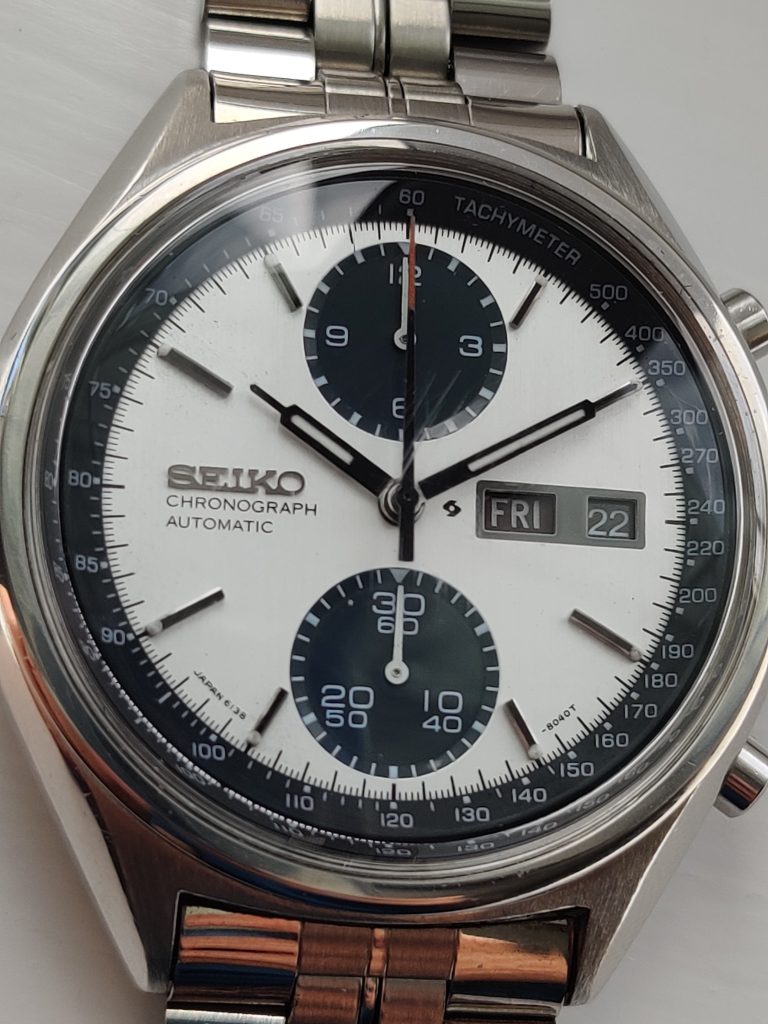
It’s one of the more valuable 6138s – you’d expect to pay £1k or so for a good one on a correct bracelet. The “Baby Panda” 6138-8000 is much rarer and a good bit more valuable if you get a good one.
Be careful of any Panda you see for sale – there are lots of fake parts out there, and the dial and hands are often replaced. The dials tend to corrode with some “bronzing” or spotting. Key things to look for include that the As in JAPAN on the lower left should be flat-topped rather than pointy.
There’s also a notable vertical brushing that isn’t always obvious in photos (so don’t worry if you can’t see it) as it’s very light sensitive. Check out the weight and spacing on the text at 9 o’clock, and the surround of the day/date window too.
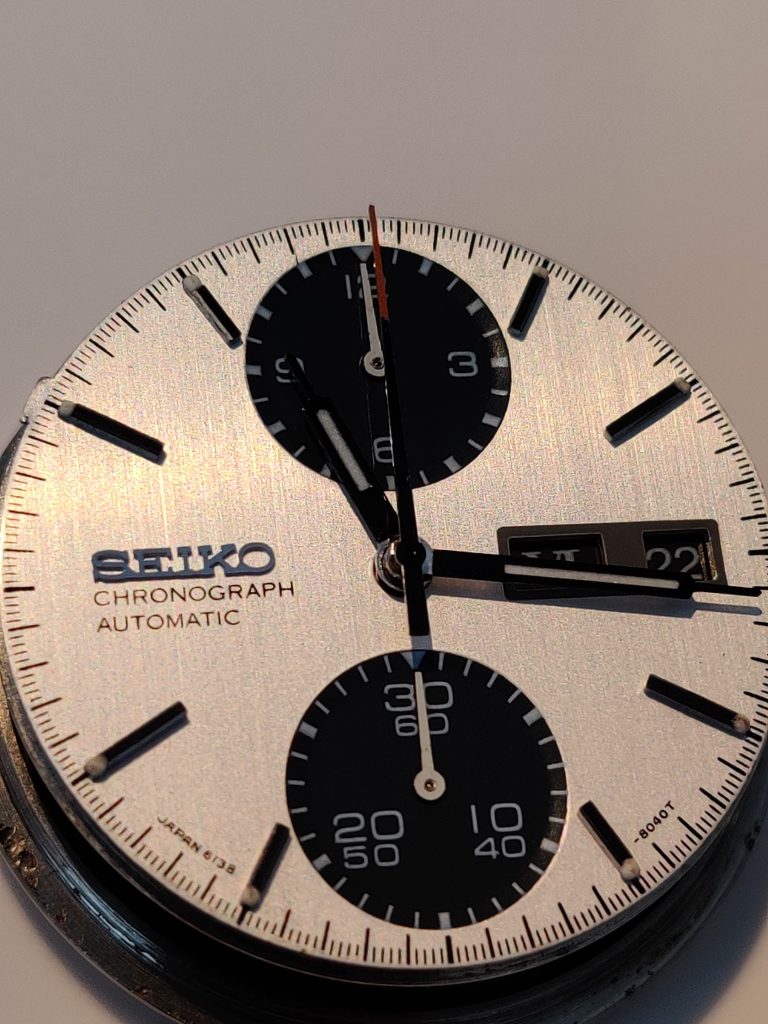
Above is a dial from a watch I had previously, which is all OK as far as I know (maybe it has been relumed at some point as the blobs of lume at the end of the markers look a bit random in shape).
Here’s one I bought from a dealer on the basis of a single photo, and returned it when I had it in hand and realised it was all faked… Compare the text along the bottom of the dial as the key tell-tale.
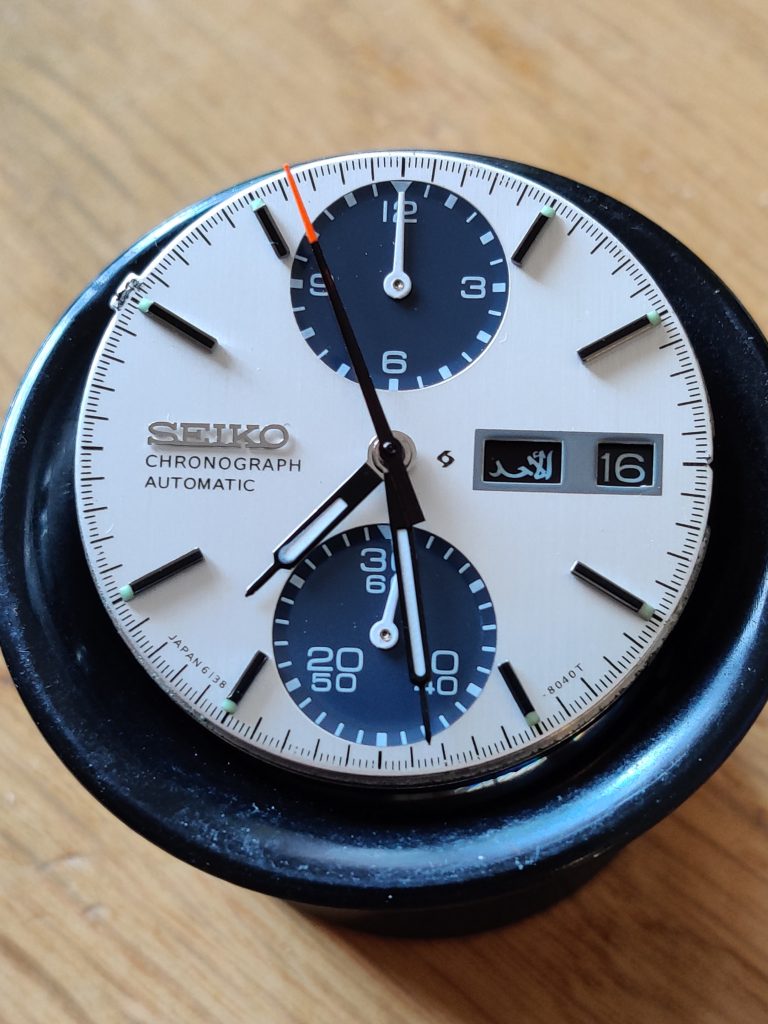
Anyway, the Panda is a great watch on the wrist – in my opinion, it just feels right and looks good. Ideally, get one on a Stelux bracelet if you can – the SEIKO logo on the clasp in bas relief and the STL Stelux on the inside of the clasp are quick ways to spot, along with endlinks which are not marked.
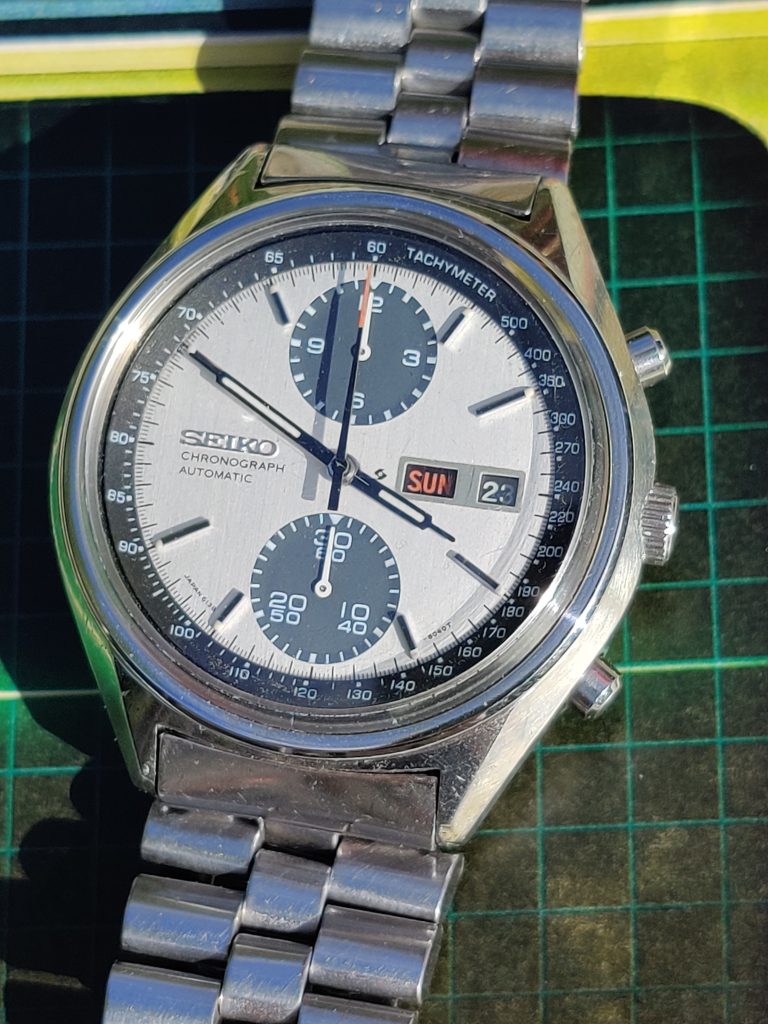
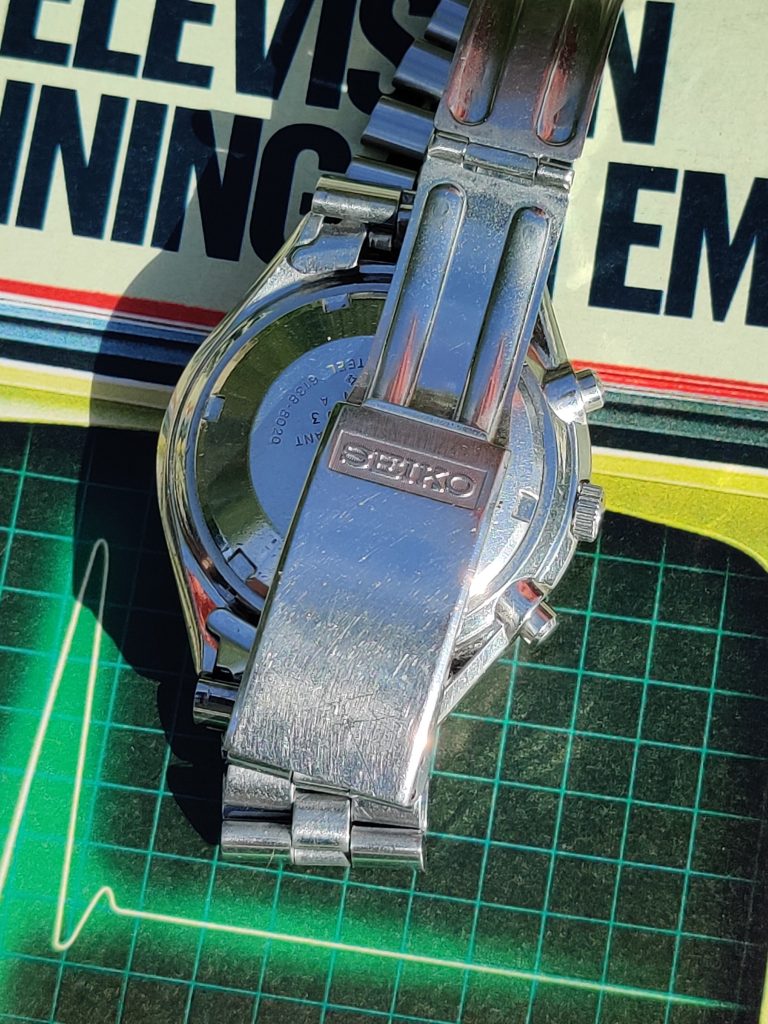
The more common non-Stelux bracelet is marked Z027 on the end links…
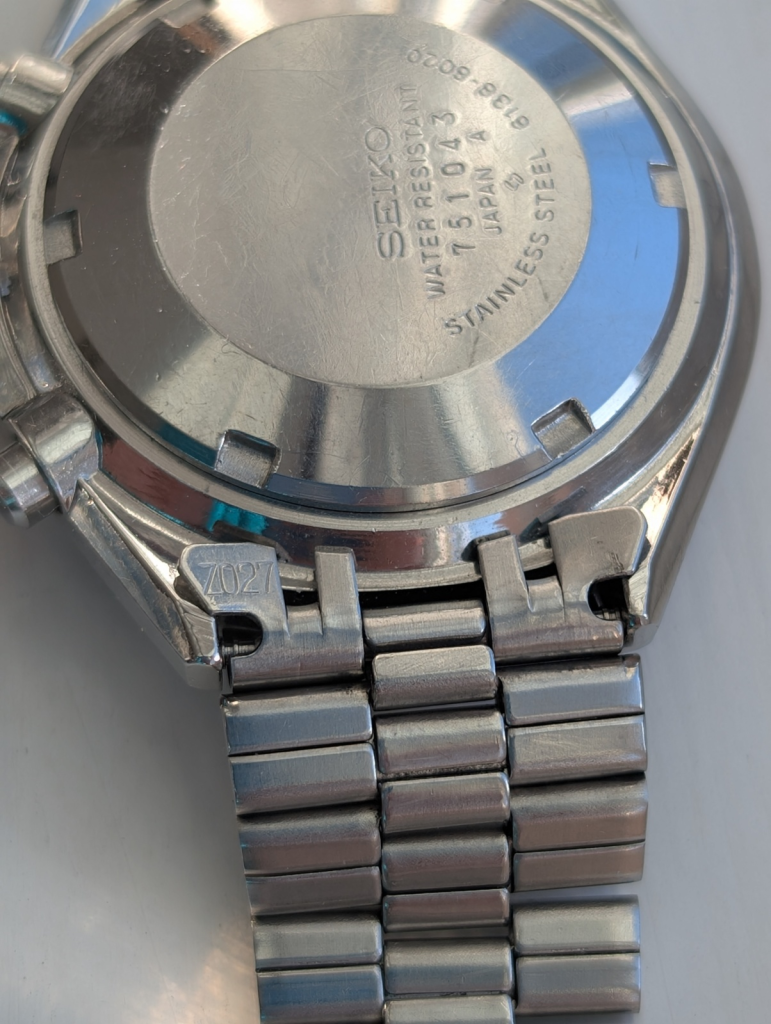
The Z027 is a bit lighter and the links are a bit flatter than on the Stelux “President” one…

The Panda at the very top of this post had a different custom bracelet, made by Stefan / schillaci61 where he modified the end links from that bracelet so it would fit the Panda. If you see any watches with that distinctive central link, the bracelet came from Stefan.
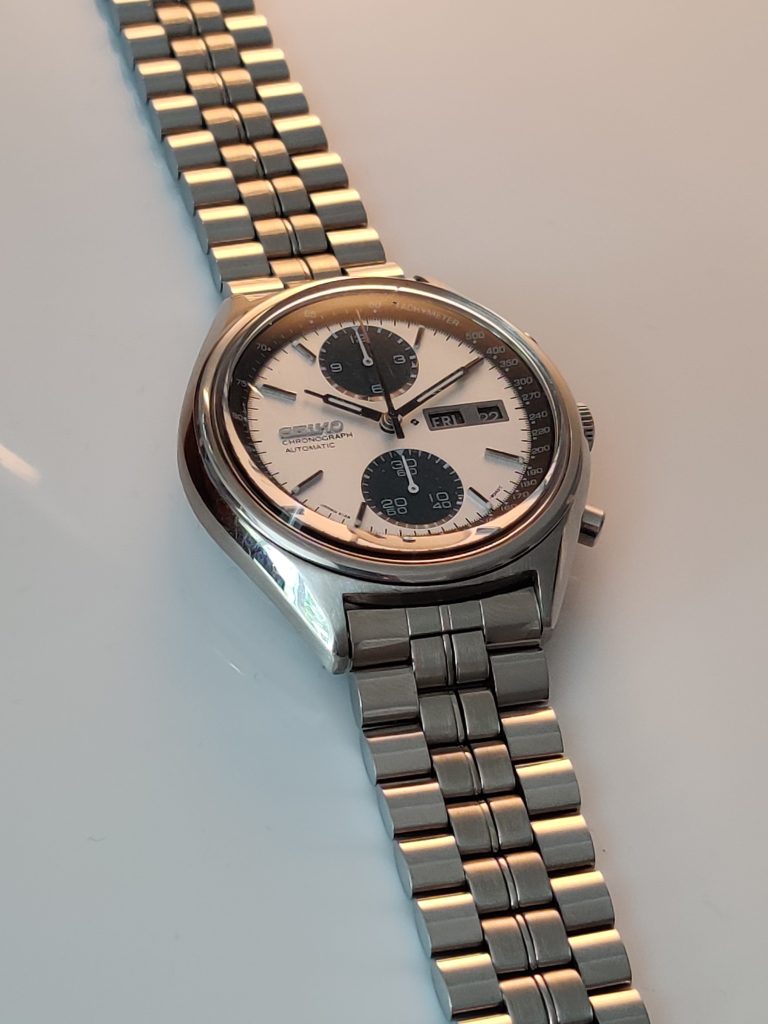
The Panda came out in 1972 (I think) until 1977 or 78, so expect the serial number to start 2 up to 7 or 8, watch out for cases that have been over-polished, dials or hands that have been switched, crystals that are wrong, and bracelets that are correct. It’s a 19mm lug width and looks OK on a strap but I’d always try to get one with a bracelet.
I did mention that the bracelets could be interchanged with another 19mm wide case, used in the 6139-6020 “Pulsations” – Bracelet interchange–Doctor Panda.
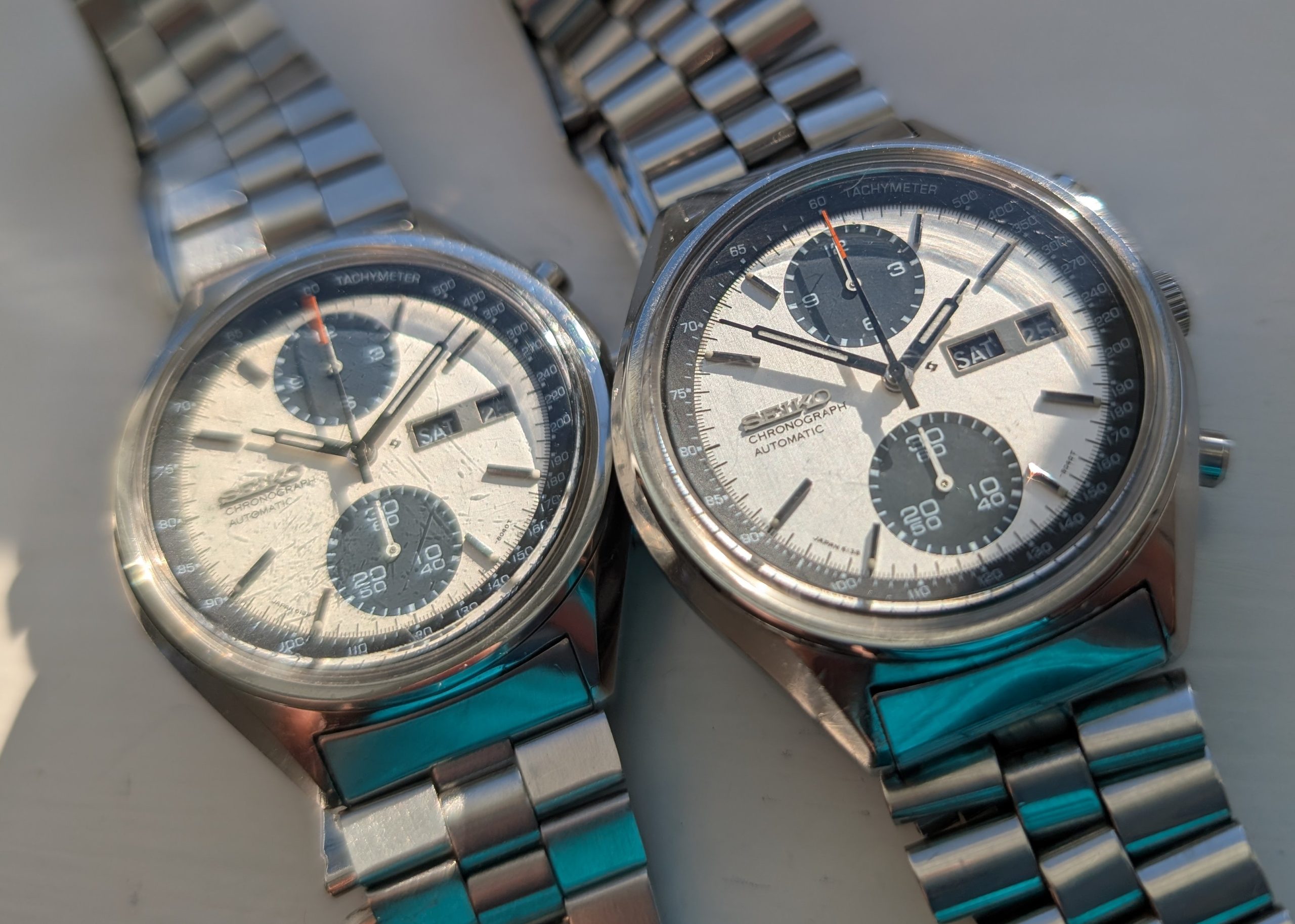
[…] on from part 1, here’s a look at another iconic 6138 from the mid 1970s. This is a watch which I used to own […]